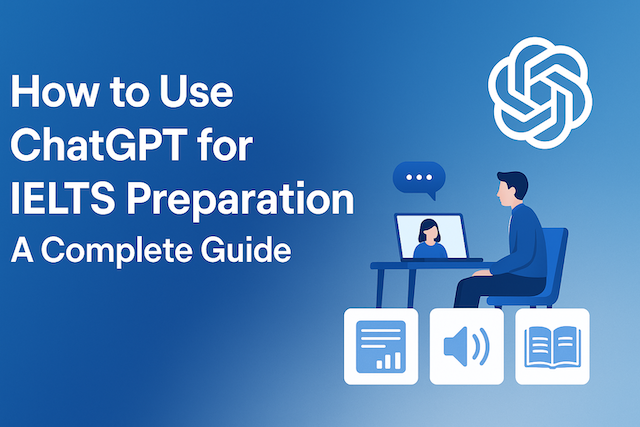Is the Philippines a Good Place to Study English?
Is the Philippines a Good Place to Study English? A Comprehensive Guide to the Benefits and Considerations
1. Introduction
In recent years, Southeast Asia has been gaining attention as a destination for English study abroad.
As exchange rates continue to rise, the cost of studying in countries like the United States, the United Kingdom, Australia, Canada, and New Zealand has surged dramatically. In contrast, the number of students choosing to study English in countries such as Malaysia, Thailand, and the Philippines has increased significantly — largely because of the lower overall cost.
Among these, the Philippines has become especially popular among ESL (English as a Second Language) learners from around the world.
The Philippines is a country where both Filipino and English are official languages. Due in part to its colonial past, the country has been heavily influenced by American culture and language. As a result, the Philippines uses American English, and compared to countries like India — which also use English in education — it is known for a clearer, more neutral accent, making it especially attractive to English learners.
But is the Philippines really a good place to study English?
In this article, we’ll examine that question from multiple perspectives and help you determine whether the Philippines is the right destination for your English-learning journey.
2. English Proficiency in the Philippines
English and Filipino as Official Languages
The Philippines has two official languages: English and Filipino (Tagalog). Among Asian countries, the Philippines is one of the most English-proficient, and English is used in daily life across various settings.
English Is Used in Education, Business, Media, and Government
One of the most important aspects is that education in the Philippines is conducted in English. While local languages may be spoken in informal situations, especially among Filipinos, school textbooks are written in English, and a university degree in the Philippines is essentially an English-language qualification.
Among the Top in Asia for English Skills
The Philippines consistently ranks among the top countries in Asia for English proficiency. In fact, in global rankings of business English ability among non-native English-speaking countries, the Philippines often holds the No.1 position.
Filipinos grow up listening to English music and watching Hollywood movies — and in Philippine cinemas, foreign films are shown without subtitles because the majority of viewers understand English fluently.
️ Example: The country’s strong English skills have helped develop its call center and BPO (Business Process Outsourcing) industries, making the Philippines a global outsourcing hub.
3. Significantly Lower Costs Compared to Western Countries
Tuition and Dormitory Fees Are a Fraction of Those in the US, UK, Australia, or Canada
The cost of attending university in the Philippines is remarkably low compared to Western countries — often under $1,000 per year. Even the most expensive programs, such as medical school, generally cost around $1,500 to $2,000 per year. That’s why many international students, including a large number of Indian students, choose to study medicine in the Philippines.
Benefits of Studying English in Cebu, Philippines: A Comparison with Western Countries
Affordable One-on-One Lessons
In Western countries, English language schools typically offer group classes. Taking one-on-one lessons with a native English teacher can be extremely expensive.
However, in the Philippines, lower labor costs (a university graduate’s starting salary is typically around $250–$300/month) allow schools to offer affordable, high-quality one-on-one classes as a standard feature.
Cost of Living Is Also Low
Daily expenses such as food and transportation are far cheaper than in Western countries.
For example, the starting fare for a taxi is around $0.80, and while imported goods can be expensive, living locally is incredibly cost-effective.
Example: A 4-week ESL course with dormitory accommodation in the Philippines typically costs $1,500–$2,500, whereas similar programs in Western countries can cost $5,000 or more.
4. The Philippines’ Unique Strength: One-on-One Lessons
Most Language Schools Offer One-on-One Classes
One-on-one classes — where each student learns directly with a teacher — are the core teaching method in most Philippine ESL schools.
Students can take anywhere from 4 to 8 classes per day, totaling up to 40 hours per week of intensive instruction.
Personalized Lessons Based on Individual Needs
Because lessons are conducted one-on-one, instructors can fully tailor the content to meet each student’s goals.
Whether you want to focus entirely on speaking, or prefer to balance grammar, writing, listening, and test preparation (TOEIC, TOEFL, IELTS), the lessons can be adjusted accordingly.
Ideal for Beginners and Shy Learners
Many students who struggle to keep up with group classes in Western countries turn to the Philippines for a better fit.
For those who feel nervous speaking in front of a group — or who are complete beginners — one-on-one lessons are highly recommended.
Student testimonial: “Speaking one-on-one every day gave me the confidence I needed to use English in real life.”
5. A Friendly and Culturally Compatible Atmosphere
Filipinos Are Kind, Polite, and Known for Their Strong Sense of Hospitality
As a predominantly Catholic country, the Philippines is home to many devout, respectful, and kind-hearted people.
Filipinos are known for their excellent English skills and hospitality, which is why many work successfully abroad in fields like healthcare and the service industry in Western countries.
Welcoming to Students from Japan, Asia, the Middle East, South America, and Europe
The Philippines is known for its inclusive and tolerant culture — free from racial discrimination.
People of all races, religions, and backgrounds are welcomed.
In regions like Mindanao, a significant Muslim population coexists peacefully, showing the country’s cultural openness to Islamic traditions and the Middle Eastern world.
Shared Cultural Values: Family-Oriented and Humble
One of the strongest similarities with many Asian cultures is the importance of family.
While Filipinos are often seen as cheerful and outgoing, many are actually humble and modest at heart, making it easier for international students to feel at ease.
Key Point: The multicultural nature of ESL schools in the Philippines makes it easy to form international friendships.
6. Flexible Start Dates and Easy Visa Process
Start Any Monday – Flexible Scheduling
Most English language schools in the Philippines follow a weekly enrollment system, allowing students to start classes any Monday throughout the year. This makes it easy to plan your study abroad based on your personal schedule.
Short-Term Study Is Possible with a Tourist Visa
Citizens of over 150 countries can enter the Philippines visa-free and receive an automatic 30-day tourist visa upon arrival (59 days for citizens of Brazil and Israel).
Visa extensions are relatively simple and can be renewed for up to 1–2 years in many cases.
For more details about visas, check this guide:
“Do I Need a Student Visa to Study English in Cebu, Philippines?”
Schools Are Located in Popular Tourist Destinations (Cebu, Baguio, etc.)
There are many language schools in well-known destinations like Cebu and Baguio.
Most schools have dedicated visa officers on staff, so students don’t need to handle extensions on their own — allowing them to focus entirely on learning English.
✈️ The Philippines is a perfect destination to combine travel with English study.
7. There Are Some Challenges to Be Aware Of
Slight Accent Differences Compared to American or British English
Filipino English does have a distinct accent, which some learners may notice.
However, many ESL teachers in the Philippines speak with a very clear and neutral American-style accent, especially in established schools.
Infrastructure Issues in Some Areas (Internet Speed, Power Outages, etc.)
In places like Cebu, infrastructure can vary by location.
For example, areas like Mactan Island may have slower internet speeds, weaker water pressure, or more frequent power interruptions compared to Cebu City.
Compared to developed countries, occasional power outages are still relatively common.
School Quality Varies — Choosing the Right School Matters
There is a wide range of quality among English schools in the Philippines.
For example, 3D ACADEMY is located inside JY Square Mall in central Cebu City, and offers reliable Wi-Fi, stable water pressure, and backup power generators, creating a comfortable and stable learning environment.
⚠️ Advice: Choose a school with a strong track record, good reviews, and a diverse international student population.
8. Who Is This Ideal For?
Those Who Want to Study Abroad on a Budget
The Philippines is perfect for students who want to minimize costs. If you don’t mind the infrastructure differences typical of Southeast Asia and are open to experiencing its unique culture and atmosphere, it’s a great fit.
Those Who Want Intensive English Study (Especially One-on-One Lessons)
If your goal is to focus deeply on improving your English, especially through personalized one-on-one instruction, the Philippine ESL system is ideal.
Beginners Who Want to Learn in a Supportive Environment
This is especially recommended for English beginners who want to build a solid foundation.
If group classes feel intimidating, the one-on-one format allows you to grow in confidence and prepare for future studies in Western countries.
Those Who Want English + Travel and Cultural Experience
Studying in Cebu offers much more than just classes. You can enjoy school trips to tropical beaches, volunteer experiences, and various other activities that combine language learning with personal growth.
It’s a great option for adventurous learners seeking a mix of education and exploration.
9. Voices from International Students Around the World
Students from all over the globe — including Japan, Vietnam, Russia, Saudi Arabia, South Korea, Turkey, Brazil, France, and Mongolia — have chosen the Philippines as their study abroad destination.
Here are some of their real experiences:
“My English improved faster than I expected. The one-on-one lessons helped me focus exactly on what I needed.”
— Yuki, Japan
“It was much cheaper than Canada, and I loved the warm weather and relaxed lifestyle. I learned a lot while enjoying the beach every weekend!”
— Mai, Vietnam
“At first, I thought group classes would be fine. But after trying one-on-one lessons in the Philippines, I realized how powerful personalized learning can be.”
— Olga, Russia
“As a Muslim student, I was worried about food and culture, but the school provided halal options and respected my prayer times. I felt comfortable and welcomed.”
— Ahmed, Saudi Arabia
“I made friends from 10 different countries. We studied, traveled, and even celebrated birthdays together. It felt like a second home.”
— Soo-jin, South Korea
“I worked remotely while studying English. The cost of living and flexibility of class schedules made that possible.”
— Lucas, Brazil
“I was preparing for IELTS, and the school helped me go from 5.5 to 6.5 in just eight weeks. I couldn’t have done it in my home country.”
— Amina, Turkey
“It wasn’t just a language course — it was a cultural exchange. Talking with teachers and classmates from different countries broadened my worldview.”
— Claire, France
“As a medical student, I needed strong English skills to study abroad. The speaking and listening training here was exactly what I needed.”
— Batbayar, Mongolia
These testimonials show that regardless of background, culture, or English level, students find the Philippines to be a supportive, effective, and life-changing place to study English.
10. Conclusion: Is the Philippines a Good Place to Study English?
The answer is YES — thanks to its affordability, personalized instruction, and warm, welcoming culture.
It may not be the best fit for everyone, but for many learners around the world, the Philippines is a strong and practical choice for English education.
Final thought: Come and see for yourself — you might be surprised by how much you can learn and grow here!
About 3D ACADEMY
3D ACADEMY is a Japanese-managed English language school located in the heart of Cebu City, Philippines — inside the JY Square Mall, a safe and convenient area close to restaurants, banks, cafes, and supermarkets.
Since its founding in 2012, 3D ACADEMY has welcomed over 10,000 students from more than 30 countries around the world. While originally known as a school for Japanese learners, the campus has become increasingly international in recent years, with students from Vietnam, Russia, Saudi Arabia, Korea, Spain, Mongolia, Brazil, and more.
Our core strength lies in one-on-one ESL classes, designed to help each student focus on their individual goals — whether it’s improving conversation skills, preparing for tests like IELTS or TOEFL, or building confidence in real-life communication. We offer a variety of flexible programs, including General ESL, Business English, Test Preparation, and Internship options.
In addition to academics, 3D ACADEMY emphasizes affordable, all-inclusive packages, with on-site dormitories, daily meals (including halal options), laundry services, and regular student activities such as city tours, volunteer programs, and beach trips.
We also take pride in our hospitality-inspired support system — offering care and guidance from both Japanese and international staff members. Whether it’s your first time traveling abroad or you’re a seasoned traveler, our team ensures that every student feels supported from arrival to graduation.
At 3D ACADEMY, we believe that language learning should be both effective and life-changing. Our mission is not only to teach English, but also to help students grow through cultural exchange, friendship, and personal challenge — all in one of the most beautiful and dynamic cities in Southeast Asia.




